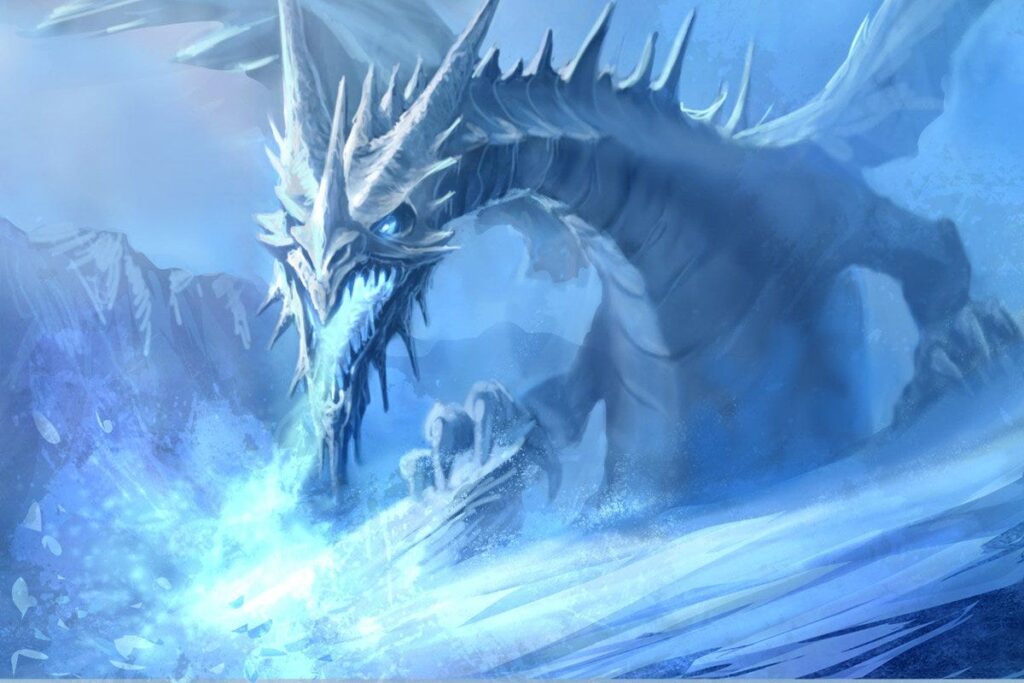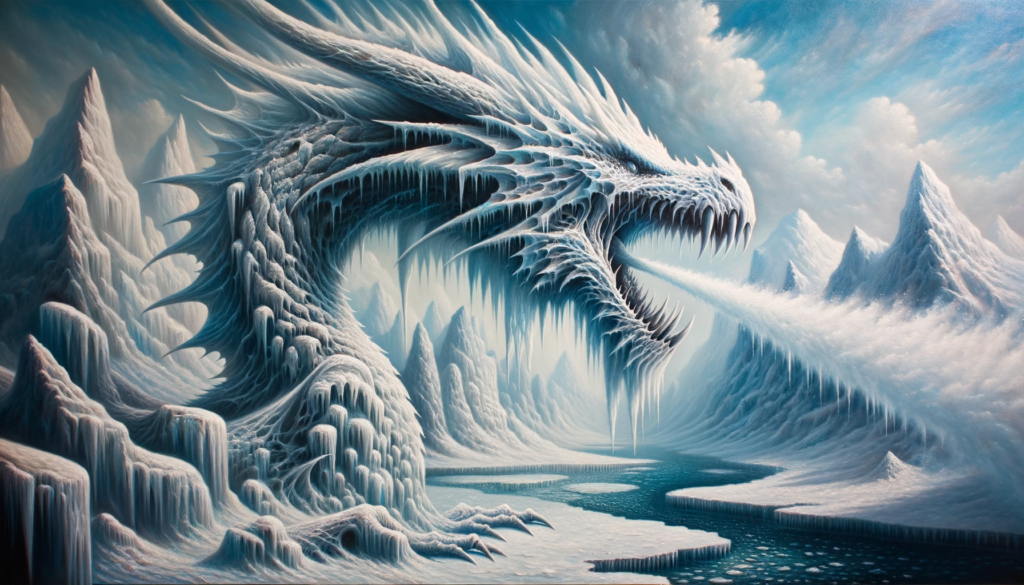Ice Dragons – an Overview:
Ice dragons are mythical creatures that, amongst elemental dragons, have captured the imagination of storytellers and cultures in regions of extreme cold and ice for centuries. These majestic beings are associated with frigid environments, mastery over ice and snow, and a sense of otherworldly beauty. While they exist solely within the realm of folklore and fantasy, the legends of ice dragons continue to inspire tales of wonder and enchantment.
Physical Characteristics:
- Appearance: Ice dragons are often portrayed as magnificent, serpentine or dragon-like creatures, adapted for life in the frozen realms.
- Scales: Their scales are crystalline and shimmering, reflecting the colours of ice and snow, with shades of blue, white, and silver.
- Horns: Many ice dragons have icy, jagged horns adorning their heads, resembling frozen stalactites or icicles.
- Size: These dragons are typically depicted as large and formidable creatures, capable of navigating icy landscapes with grace and power.
Habitat:
Ice dragons are primarily associated with frozen tundras, polar regions, and snow-covered mountains, where they are believed to make their homes in hidden, ice-filled caverns and glacial lairs.
Behaviour and Abilities:
- Cryomancy: One of the signature abilities of ice dragons is their mastery over ice and cold. They can manipulate ice and snow to create blizzards, frost, and freezing breath.
- Camouflage: Their crystalline scales allow them to blend seamlessly with their icy surroundings, making them nearly invisible when they wish to remain hidden.
- Weather Control: Legends often attribute the power to influence extreme cold and ice storms to these dragons, which can both protect their domains and create treacherous conditions.
- Flight: They are known for their ability to fly with grace and agility, often soaring above frozen landscapes with a haunting beauty.

Cultural Significance of Ice Dragons:
- Guardians of the Arctic: In cultures that inhabit extreme cold environments, ice dragons are revered as protectors of the icy wilderness and the animals that depend on it for survival.
- Symbols of Resilience: These dragons symbolise the strength and adaptability required to endure in the harshest of climates, reminding people of the beauty and danger of the frozen world.
- Folklore and Art: Tales of ice dragons have inspired the art, literature, and rituals of cultures that inhabit cold regions, infusing their lives with a sense of wonder and reverence for the frozen wilderness.
Legends and Stories:
- Different cultures have their own interpretations of ice dragon myths. In Norse mythology, the frost giants and the dragon Níðhöggr are associated with the cold and icy underworld of Niflheim.
- Some stories tell of brave adventurers who seek out ice dragons, hoping to gain their favour or learn the secrets of surviving in extreme cold.
Ice Dragons – a Conclusion:
Ice dragons are mythical creatures that embody the mystery and magnificence of frozen landscapes. They symbolise the resilience of those who call icy realms home and serve as guardians of the delicate balance between life and the unforgiving cold of the northernmost regions. Though they may remain hidden in their glacial sanctuaries, their presence is felt in the hearts and stories of those who venture into the frigid and enchanting world they call home.
For more great Dragon content please subscribe to our YouTube Channel or follow the Everything Dragon Instagram




